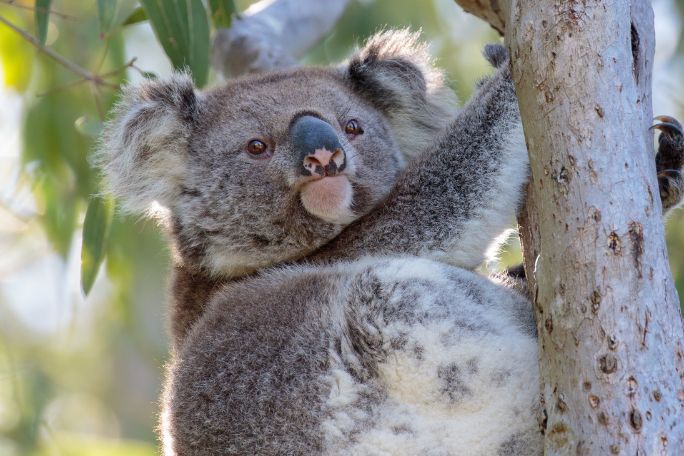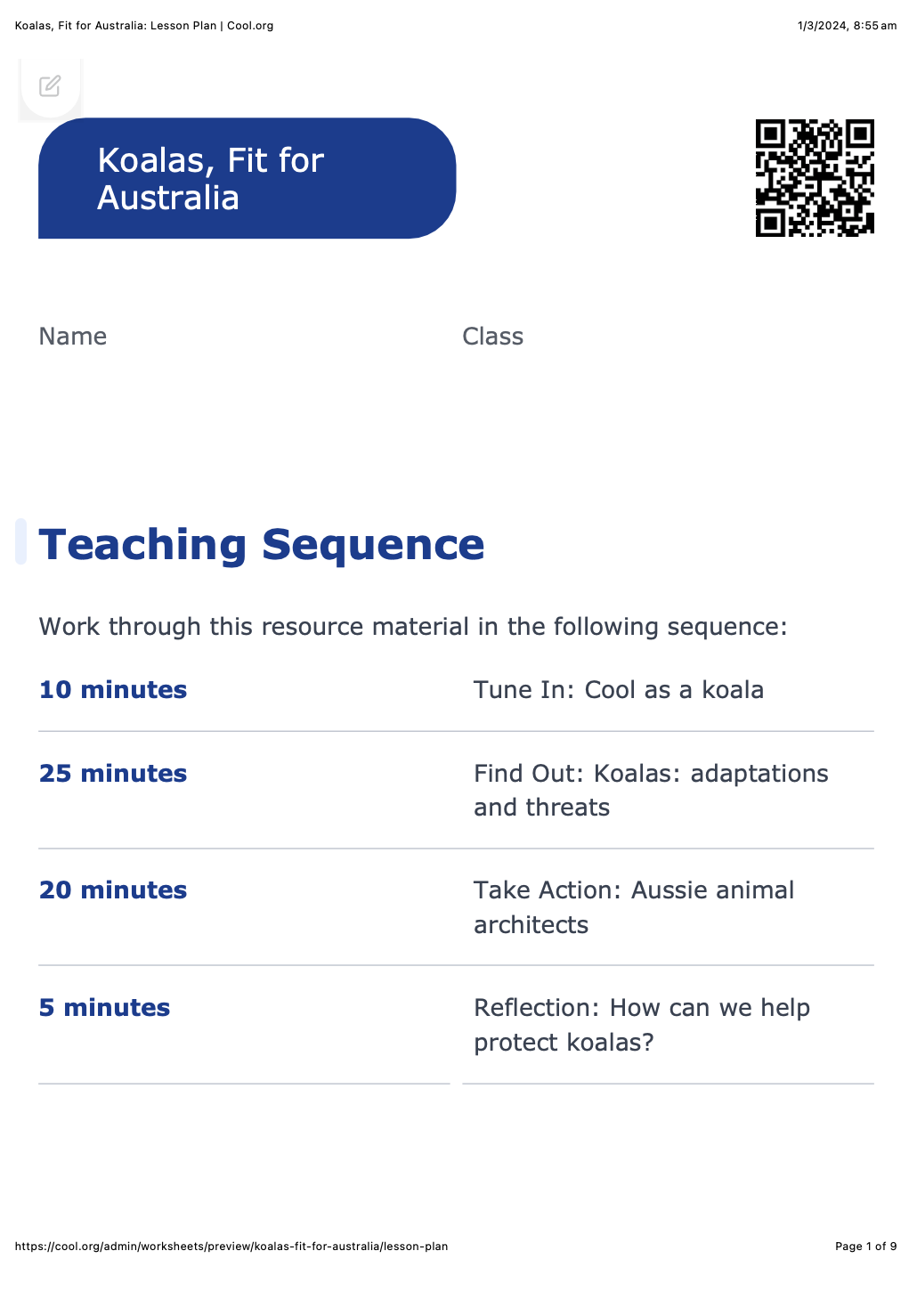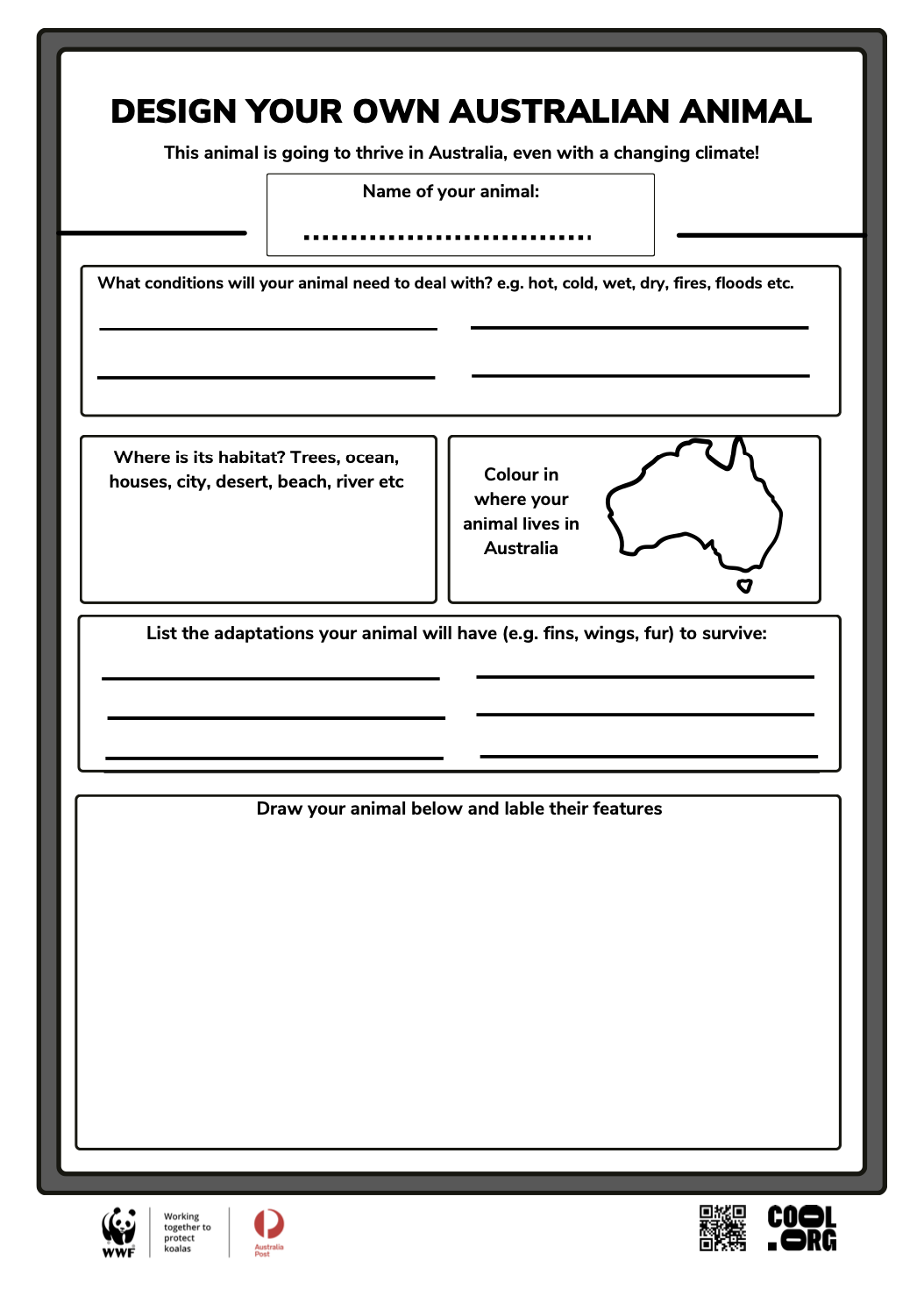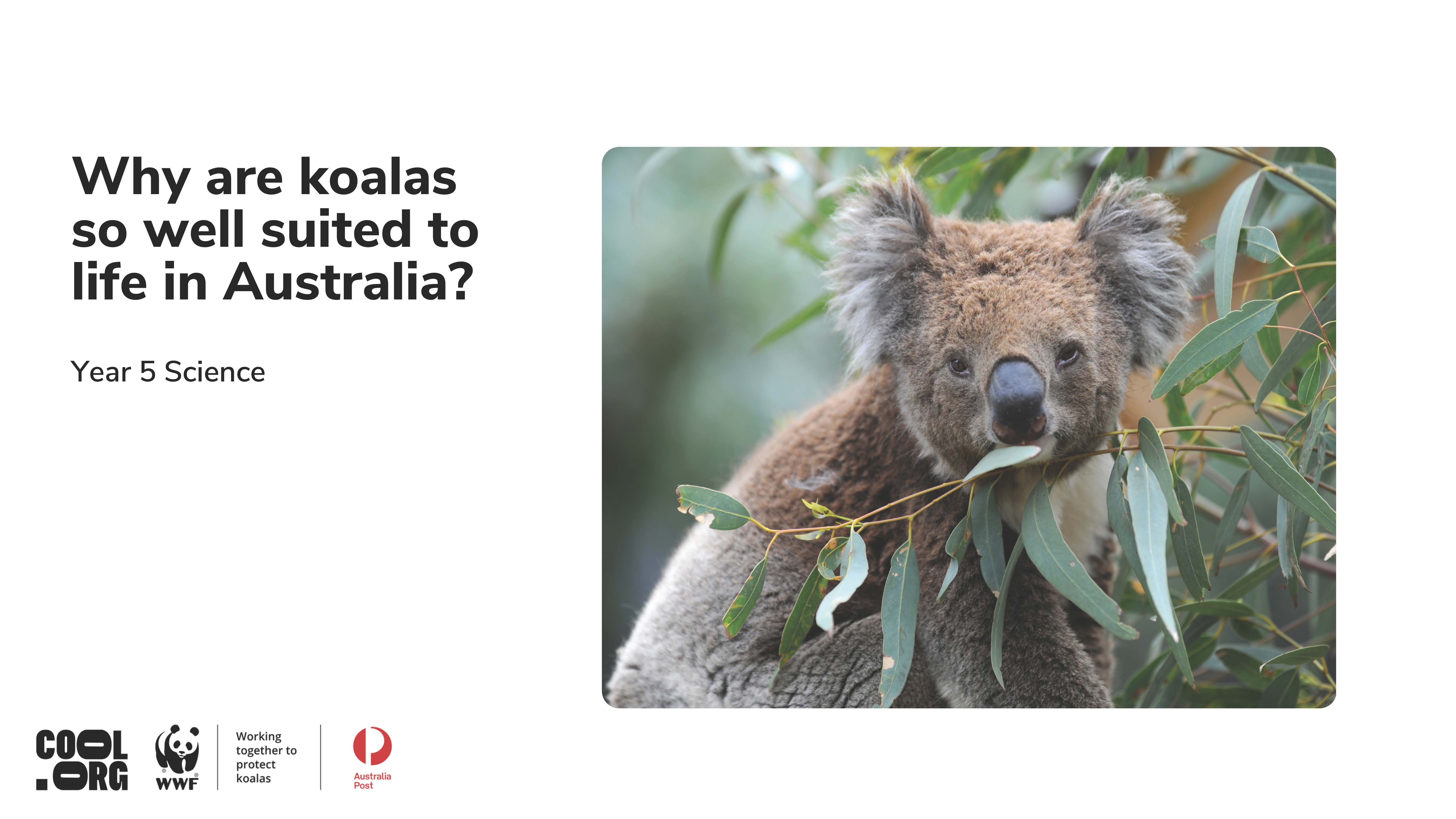Lesson summary
Students will examine how particular structural features and behaviours of living things enable their survival in specific habitats by first investigating koala adaptations and threats, and then using this information to design their own animal with adaptations to suit Australia's changing environment.
Learning intentions:
Students will...
- investigate how koalas have survived for so long in Australia. They will then design their own animal with specific adaptations that will help it survive in a changing Australian environment into the future.
Success criteria:
Students can...
- describe both physical and behavioural adaptations
- identify the threats facing koalas and other species
- understand that they can help protect biodiversity.
Lesson guides and printables
Curriculum links
Select your curriculum from the options below.
Lesson details
Skills
This lesson is designed to build students’ competencies in the following skills:
- creative thinking
- communication
- curiosity
- empathy
- ethical understanding
Curriculum Mapping
Australian Curriculum (v9.0) content description:
Year 5 Science:
- Living things have structural features and adaptations that help them to survive in their environment (ACSSU043).
Relevant parts of Year 5 achievement standards: Students analyse how the form of living things enables them to function in their environments.
NSW Curriculum: ST3-4LW-S
- examines how the environment affects the growth, survival and adaptation of living things
General capabilities: Critical and Creative Thinking, Literacy
Cross-curriculum priority: Sustainability
UN Sustainable Development Goals
UN SDG 15: Protect, restore and promote sustainable use of terrestrial ecosystems, sustainably manage forests, combat desertification, and halt and reverse land degradation and halt biodiversity loss
- Target 15.5: Take urgent and significant action to reduce the degradation of natural habitats, halt the loss of biodiversity and, by 2020, protect and prevent the extinction of threatened species
Resources Required
- Device to share visual explainer and video with the class
- Pens/pencils
- Worksheet
Additional Info
This lesson has been created in partnership with WWF-Australia and made possible thanks to its proud supporter, Australia Post.
In 2022, koalas on Australia’s east coast were officially listed as an endangered species, after dramatic population decline. Habitat destruction, climate change and extreme weather events including bushfires and floods have had a significant impact on koalas.
As one of Australia’s most trusted conservation organisations, WWF is working tirelessly to turn this tragedy around with Australia Post joining them in their mission to double koala numbers across eastern Australia by 2050.
Level of teacher scaffolding: High - teacher to deliver slide deck to students and facilitate class discussion.
Related Professional Learning
Investigate How Animals are Impacted by Their Environment
Almost 70% of 7-12 year olds have heard about climate change. This course will help inspire your students to feel optimistic about their future by investigating how animals adapt to climate change. You’ll discover how to teach curriculum-aligned lessons using WWF-Australia’s Earth Hour.




Welcome back!
Don't have an account yet?
Log in with:
Create your free Cool.org account.
Many of our resources are free, with an option to upgrade to Cool+ for premium content.
Already have an account?
Sign up with:
By signing up you accept Cool.org's Terms and Conditions(Opens in new tab) and Privacy Policy(Opens in new tab).